Located on the east bank of the Guadalquivir River in Seville, the capital of Andalusia, La Torre del Oro is a striking watchtower that has witnessed centuries of history. Originally built in during the Muslim-rule period of Al-Andalus by the Almohad Caliphate, it was a military control point to defend Seville from naval attacks.
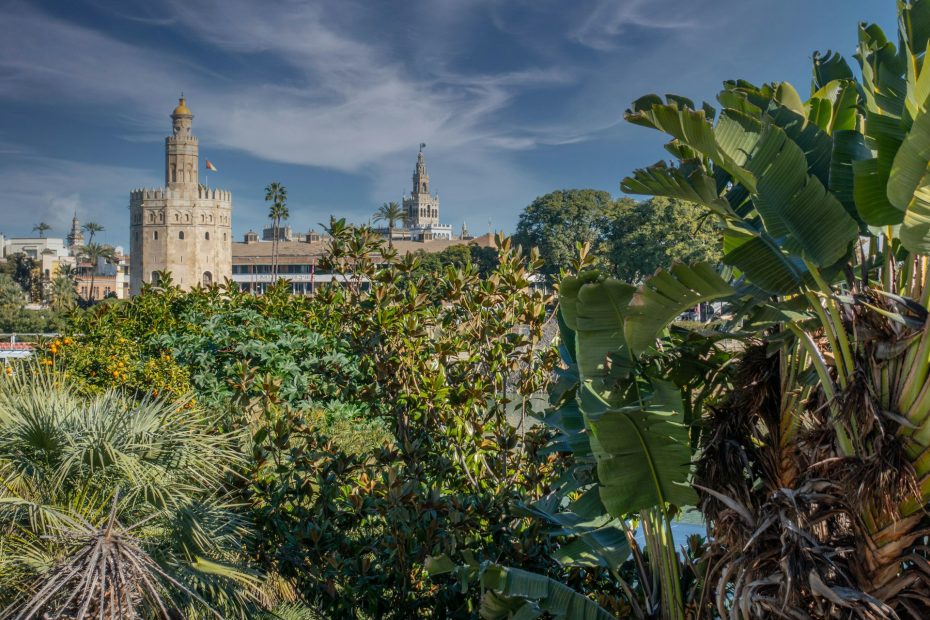
Fun fact: While Sevilla is located some 180 km (110 mi) from the coast, it is an important port city thanks to the Guadalquivir River. Historically, the river’s navigability allowed vessels to travel inland from the Atlantic Ocean, making Seville an important maritime hub in Spain. In fact, At one time, it was possible to travel all the way from the city of Córdoba to the Atlantic by boat.
1. An Eight-Centuries Old Masterpiece
The Almohad Caliphate constructed the Torre del Oro in the early 13th century. In conjunction with another (smaller) defensive structure on the opposite bank of the Guadalquivir River, it served as a watchtower and a defensive barrier.
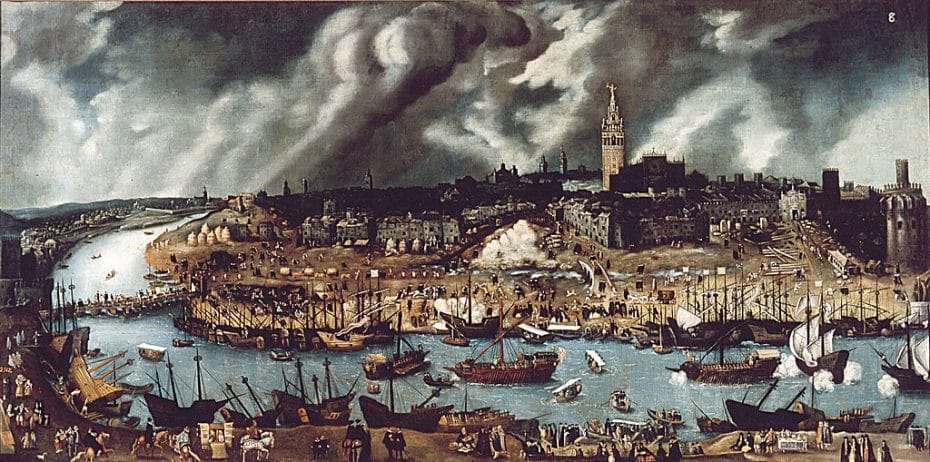
Originally, it was part of Seville’s city walls and intended to control access to the port. This dodecagonal military tower has witnessed centuries of Seville’s history, symbolizing the city’s medieval past.
2. Despite Its Name, It’s Not Made of Gold
The name Torre del Oro means “Tower of Gold.” This name derives from its color rather than its material. The construction used mortar with lime and pressed sand, creating a sturdy defense structure. Its original finish had a golden glow, possibly due to a mix of lime and straw in the mortar or tiles adorned with gold elements.
The tower is an example of Almohad architecture, characterized by its simple yet robust design. Over the years, it has seen various additions, including a small chapel and another tier added by Pedro I in the 14th century.
3. Past and Present Uses
Torre del Oro has served multiple functions since it was built in the 13th century. Initially, it was a military watchtower meant to guard Seville from naval attacks and control access to the city via the Guadalquivir River. In the Middle Ages, it was repurposed as a storage facility. During the 18th century, it functioned as a prison for political prisoners. By the 19th century, the tower had fallen into disrepair but was later restored and turned into a small maritime museum. Today, it offers an excellent view of Seville and its surroundings from its rooftop terrace.
4. Was the Tower Ever Used to Store Gold from America?
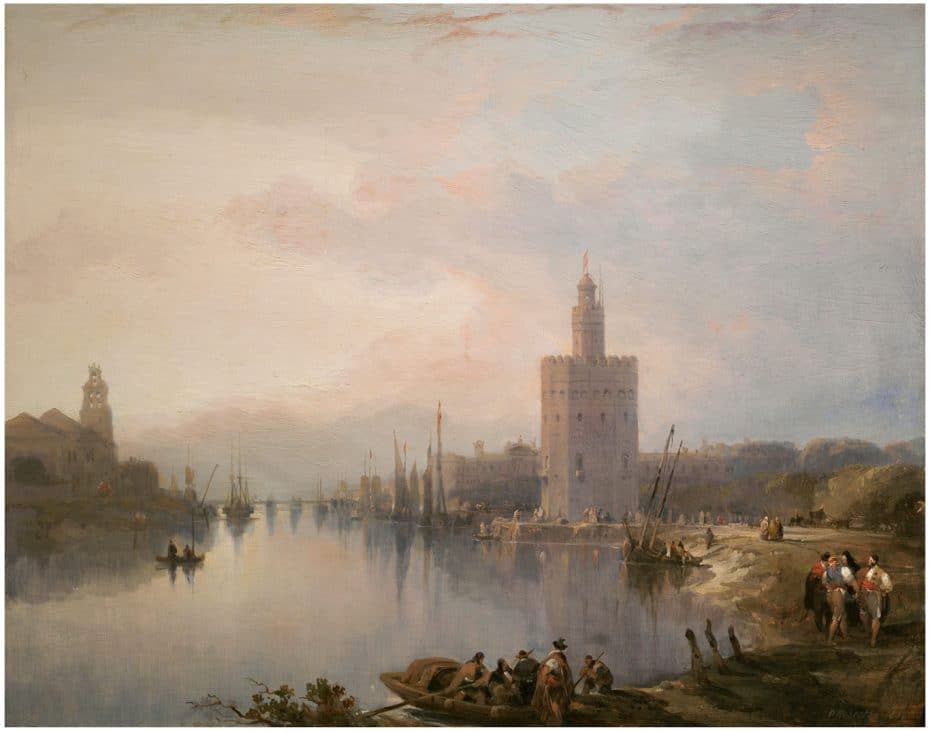
It is often believed that Torre del Oro was used as a fortified storage space for the precious metals extracted from the New World at the height of the Spanish Empire. The tale of it being a storage site for gold likely stems from its very name and the fact that Seville was a major port during Spain’s colonial period. Ships laden with treasure would dock in the city. That said, there is no concrete proof that the structure was used to store these riches. Instead, its golden title might be attributed to the golden tiles that once adorned its exterior or perhaps to the glittering reflection cast on the river.
While it might not have been a treasury for gold, Torre del Oro remains a glittering piece of Seville’s historical and cultural heritage.
5. Seville’s Golden Tower in Numbers
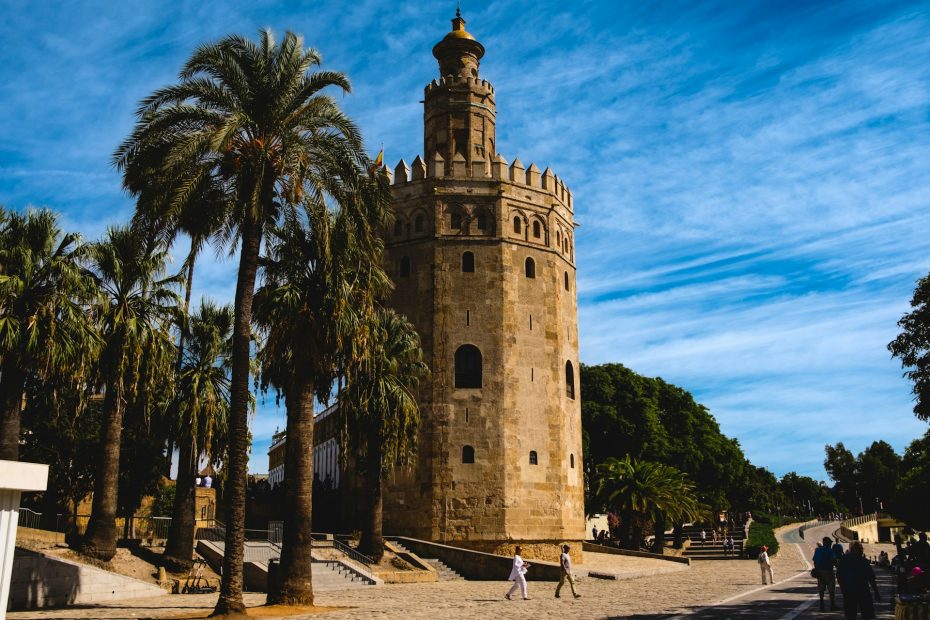
The Torre del Oro stands 36 meters (118 feet) tall and has a dodecagonal (12-sided) design. Built in the early 13th century, it was a watchtower and defensive barrier along the Guadalquivir River. The tower’s walls are 3 meters (9.8 feet) thick at the base, providing robust protection. Inside, there are three levels to explore, each with its unique features. The top level offers a panoramic view of the river and Seville’s skyline.
7. Torre del Oro Retains Its Muslim-Era Design Intact
The Torre del Oro, which, as we mentioned, dates back to the Muslim reign in Seville, experienced minimal changes after the city fell to Christian rulers in 1248 and to our days.
Contrary to other Islamic-era monuments, such as the famous Giralda, which was the Grand Mosque’s minaret and underwent substantial modifications like the addition of bell towers, the Torre del Oro largely retained its original design and purpose. The primary alterations involved minor structural repairs and reinforcements to accommodate its continued use. This preservation might be attributed to its defensive role along the Guadalquivir River, which remained relevant even under Christian rule.
8. A Symbol of Seville (and Spain)
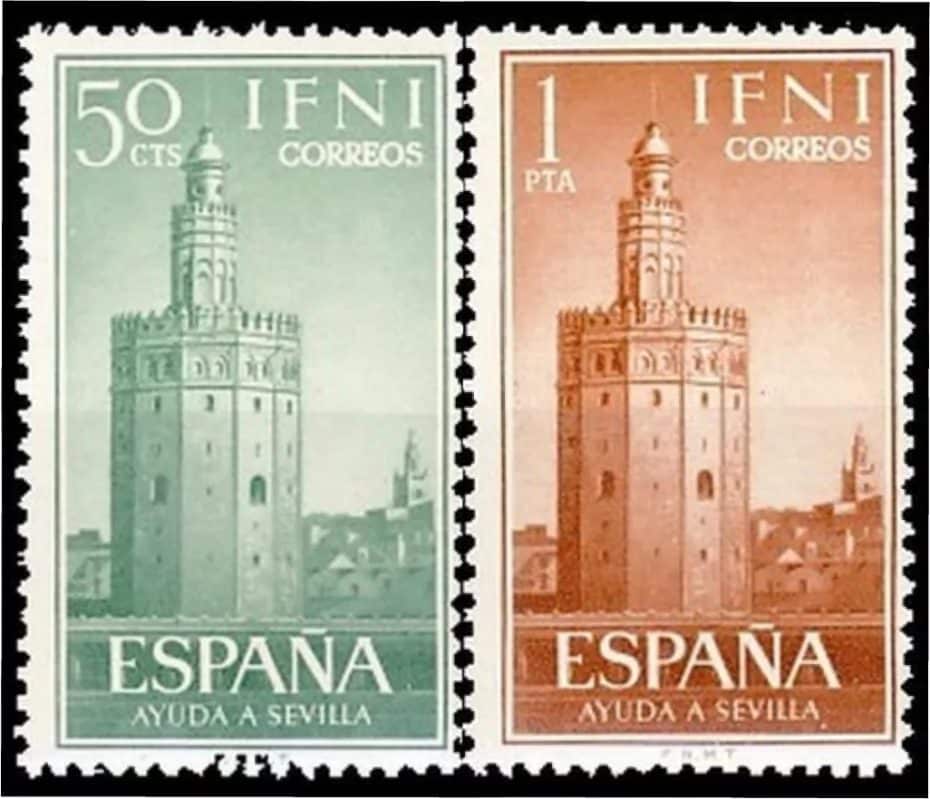
Over time, Torre del Oro became an unmistakable symbol of Seville’s rich maritime and military past. As an identity icon, this dodecagonal watchtower represents the unwavering strength and resilience that has carried Seville through centuries of growth and tribulation.
The Torre del Oro has cemented itself as a versatile figure in popular culture, symbolizing Seville’s rich heritage and capturing the public’s imagination through various artistic and cultural mediums. One prominent example is its portrayal in literature, such as the famous Spanish novel “El Asesinato de la Torre del Oro,” where the tower becomes a critical element in a thrilling murder mystery. Moreover, its image has been immortalized in many paintings, including works by celebrated artists like Gustave Doré, who depicted the tower as a romantic relic of Andalusian history. Torre del Oro’s presence also graces modern pop culture; it features prominently in films and television shows like Isabel, which focuses on Queen Isabel I of Castile, one of the most influential figures in the history of Spain.
Beyond its artistic representations, Torre del Oro stands as a cultural icon in Andalusia and beyond. As a staple of local folklore and traditions, it’s often referenced during events like Semana Santa.

Additionally, various businesses and organizations in Andalusia and worldwide use Torre del Oro’s image to brand products and services.
9. You Can Visit It
Seville’s Torre del Oro is open to visitors. The tower operates from Monday to Friday, 9:30 AM to 6:45 PM, and on weekends from 10:30 AM to 6:45 PM. Admission costs 3 euros, but students and those over 65 get a discount, paying only 1.50 euros. Climbing the tower involves navigating a narrow spiral staircase that leads up to the roof terrace, offering panoramic views of the city and the river.
To enjoy your visit best, consider combining it with a cruise on the Guadalquivir River. Several operators offer hour-long boat trips departing near the Torre del Oro, usually costing around 15 euros per person. This way, you can enjoy a walk through history inside the tower, followed by a relaxing boat ride.
Wear comfortable shoes and go early to avoid lines, particularly during weekends and holidays.
10. Meet Torre del Oro’s Less Famous Sister
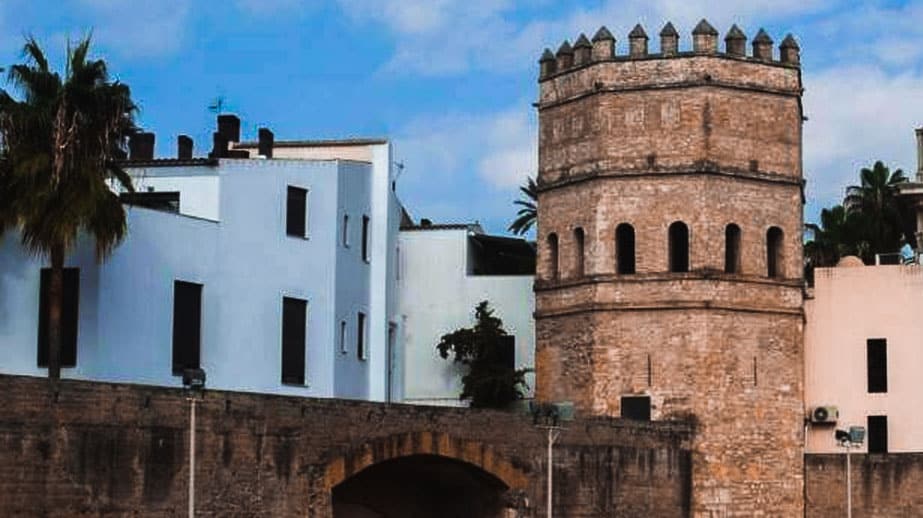
Torre del Oro is not alone. Nearby, you’ll find the Torre de la Plata on Calle Santander, an often-overlooked octagonal tower. Built in the 13th century by the Almohad Caliphate, it was originally connected to the Torre del Oro by the city wall. Until its restoration in 1992, it had been neglected and was in almost total disrepair.
In case you missed it…
Torre del Oro: Tips for a Perfect Visit
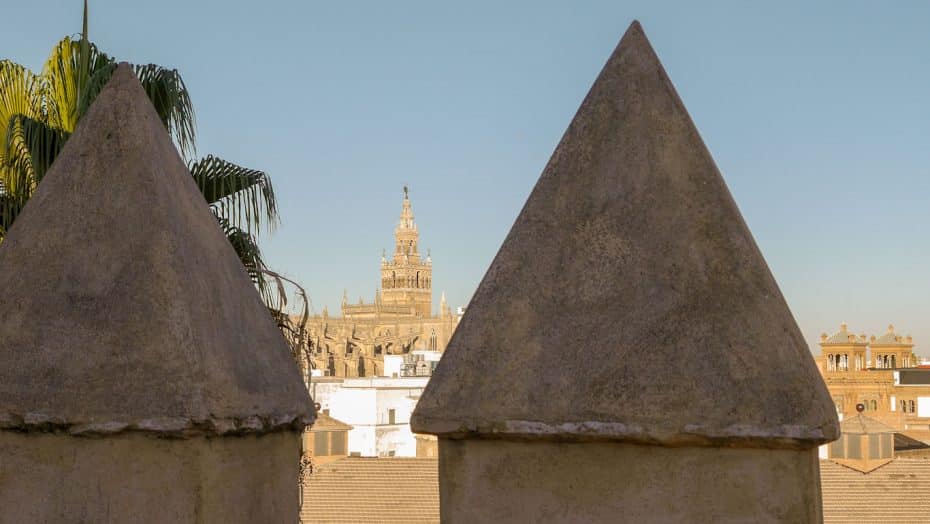
Torre del Oro, an iconic tower in Seville, Spain, is a must-visit for anyone traveling to this historic city. Here are some super useful tips for making the most of your visit.
The best time to visit Torre del Oro is in the early morning or late afternoon. This way, you can avoid the crowds and take advantage of the softer lighting for photography. The tower opens at 9:30 AM and stays open until 7 PM.
Discover the best time to visit Spain
If you’re visiting during the summer months (June to August), Seville can experience temperatures exceeding 40°C (104°F). Be sure to bring sunscreen, a hat, and plenty of water to stay hydrated.
When exploring the tower’s museum, take your time on each floor. The lower floors focus on maritime history, while the upper floors offer stunning views of the Guadalquivir River.
Public transportation in Seville is very convenient. To reach Torre del Oro, you can take Metro line 1 and get off at Puerta Jerez station. From there, it’s just a short walk along Avenida de la Constitución until you reach Paseo Alcalde Marqués de Contadero, where the tower is located.
If you prefer to take the bus, use bus lines C1 or C2, which have stops close to Torre del Oro. The nearest bus stop is Torre del Oro-Betis. From there, cross the street, and you’ll find yourself right in front of this landmark.
Given that Torre del Oro sits alongside the Guadalquivir River, why not also enjoy a boat tour? Several tour operators offer cruises that provide different perspectives of Torre del Oro and Seville’s stunning riverside.
Consider purchasing a Seville Card if you plan on visiting multiple attractions. Most tourist cards provide free entry to Torre del Oro and include other popular sites such as the Alcázar Palace and Seville Cathedral.
Tripods are not allowed inside Torre del Oro without prior permission. However, handheld cameras and smartphones are welcome, so be ready to snap some amazing shots.
Make sure your footwear is comfortable enough to climb several staircases in the tower. Note that, due to the monument’s ancient construction, the steps are steep and narrow.



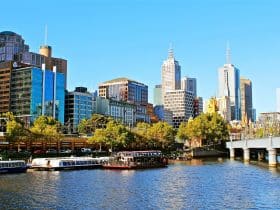
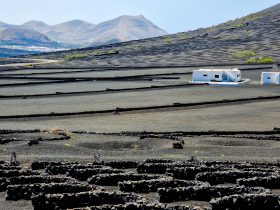

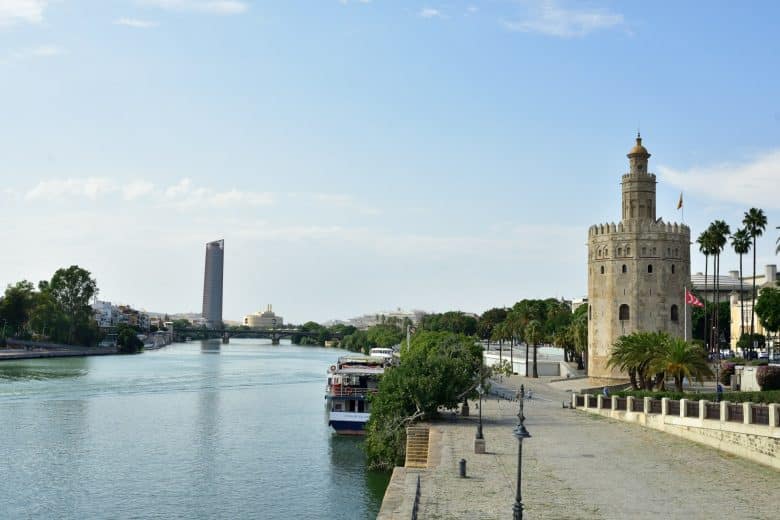

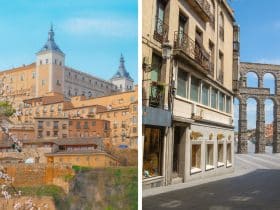


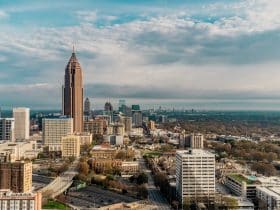









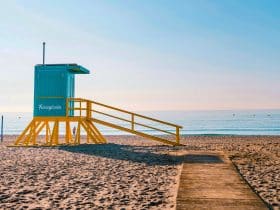
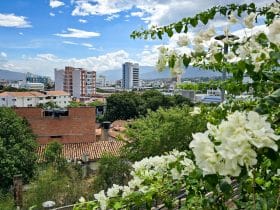
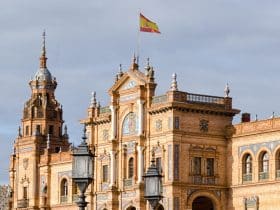
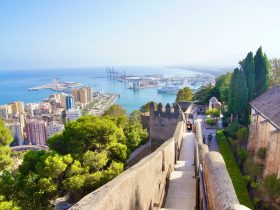
Leave a Reply
View Comments